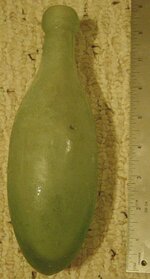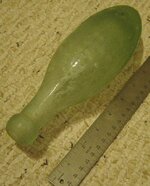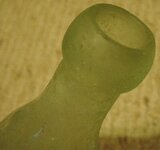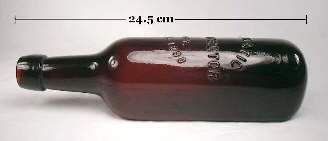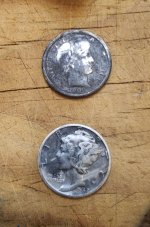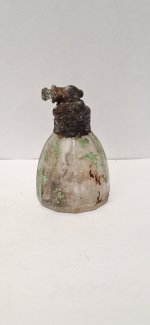Does anybody know what this old bottle would have been used for. It was found at on old house years ago. It has air bubbles in the glass but also has a seam around it. I think you should be able to see the seam in one of the pics.
Thanks for looking,
Riverpie
Thanks for looking,
Riverpie


